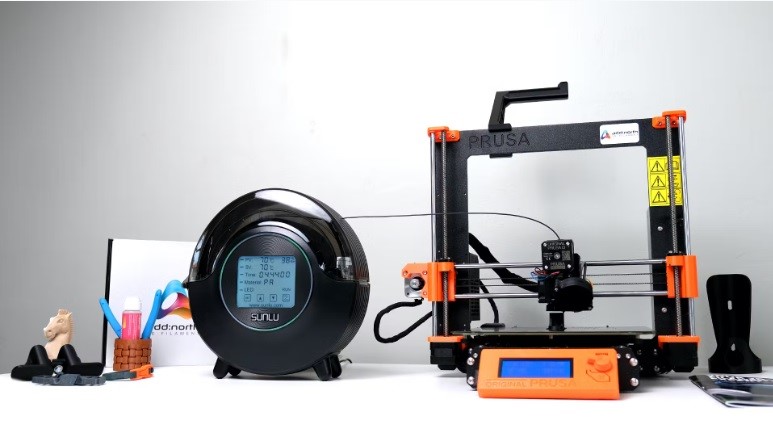Your cart is currently empty!
In today’s 3DBGPRINT article, we’ll introduce you to ways you can improve 3D printing
Keep 3D materials dry
Have you tried tweaking your 3D printer settings for better results?
More material, less heat or higher speed? Are you getting parts with rough surfaces, lots of threads or leaks or even blockages in the heat switch or nozzle?Hours of troubleshooting and messed up prints can be avoided – simply by drying your material.
All filaments are hygroscopic, which means they absorb moisture from the environment, causing the material to degrade.
Especially PETG, TPU and nylon quickly absorb moisture, which will greatly reduce the quality and strength of 3D printing. Even PLA absorbs moisture over time and will benefit greatly from drying.
How to avoid nozzle blockage at 3D printing?
Fibrous materials are often more hygroscopic than conventional ones. They can swell a lot, changing their diameter, which can eventually lead to clogging during printing. This is more pronounced in Bowden-style printers without dual extruding gears. A Bondtech style direct drive extruder is always a good investment that will help to significantly reduce these issues.
Moisture sensitive filaments.
Materials such as TPU, nylon and PETG of add:north are problematic printing filaments when wet.
Typical signs of moisture in PETG are increased leakage and faint impressions. Carbon fibre filled PETG such as Rigid X can also cause blockages when too wet, increasing its diameter.
Wet nylon is often quite easy to spot because of the popping sound it makes coming out of the nozzle.
The properties of TPU when wet are similar to nylon, with popping sounds resulting in rough surfaces on finished parts and poor quality prints.
Keep the filaments dry!
Here are a few simple rules to stick with when it comes to successful 3D printing
- Always store the nozzle filament (when not in use) in the resealable bag with the desiccant included.
- If you get unsatisfactory printing results – the first thing to do is dry the filament and re-print your object. (If you are still having problems then you can look at the printer setting for better results.)
- If the filament thread is damp, dry it for 5-6 hours in a suitable dryer. Some users achieve great results with a modified food dehydrator. Use caution when using a conventional oven because it is difficult to really regulate such a low temperature and you will risk melting the filament instead of drying it.
For example, we got excellent results using the FilaDryer S2 from SUNLU.
Easily set the correct temperature and time using presets. Works great for nylon material that needs to be constantly dried during printing. The FilaDryer S2 is affordable and a good option if you compare the features and properties of different dryers.
Sources: add:north

